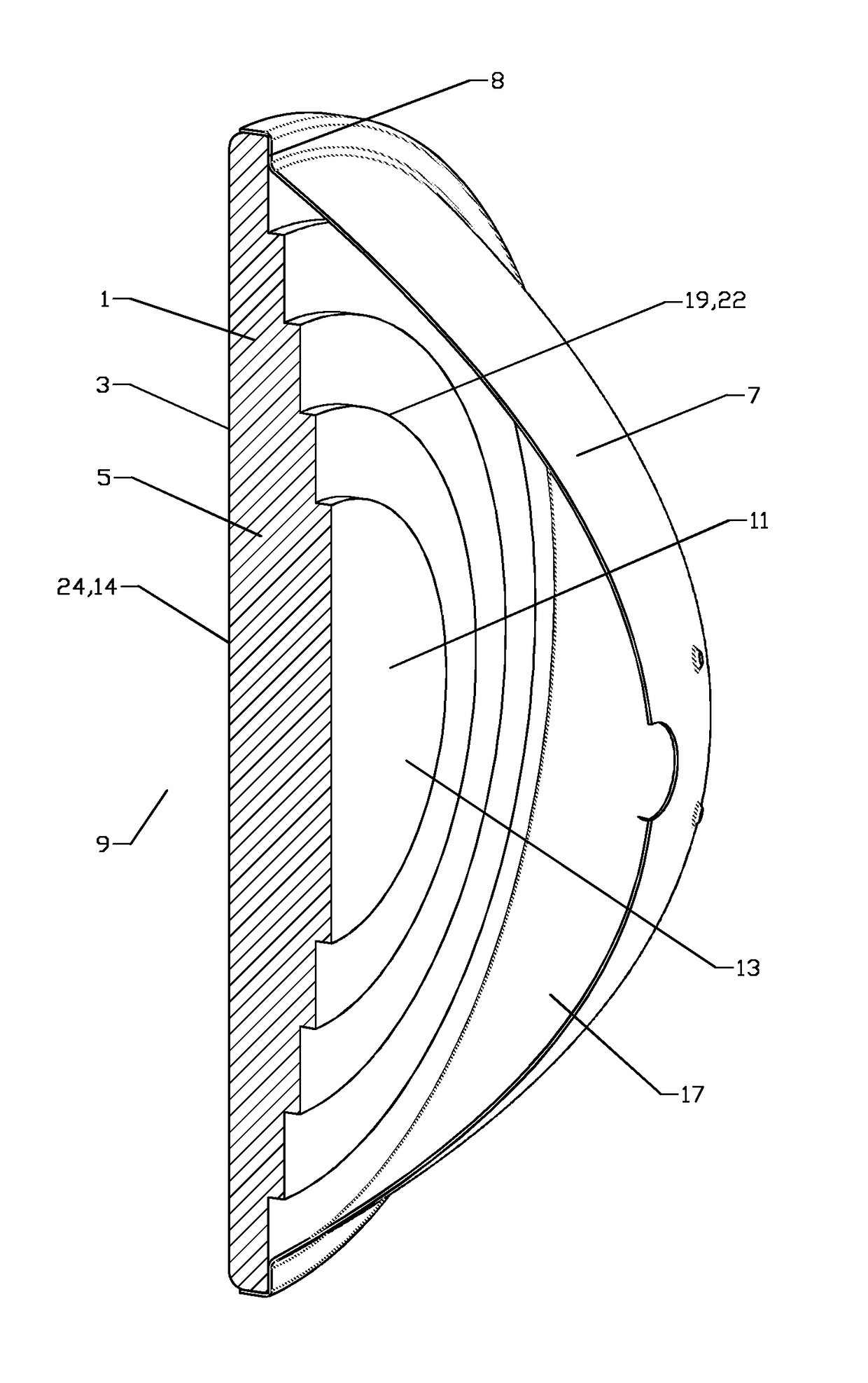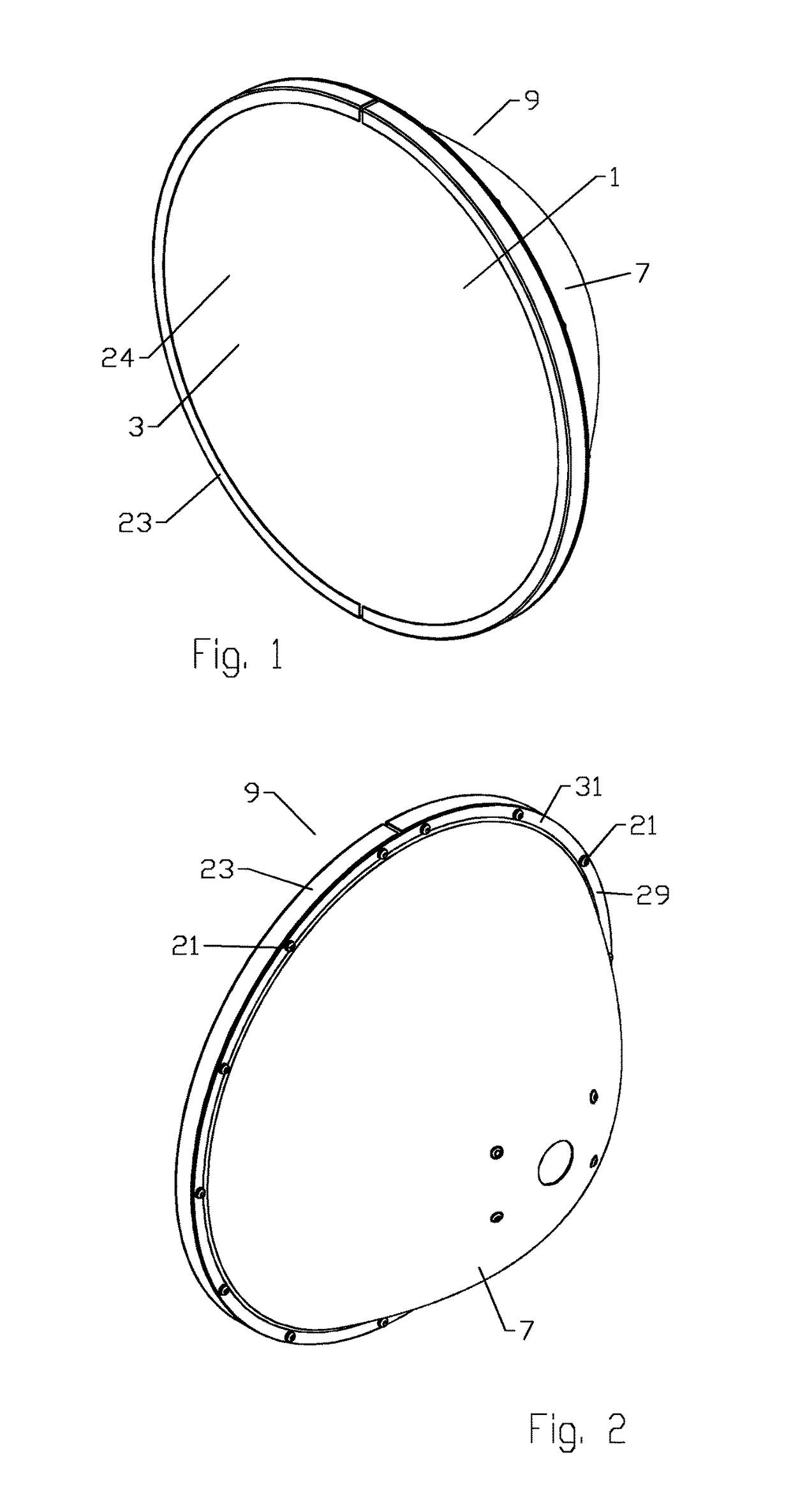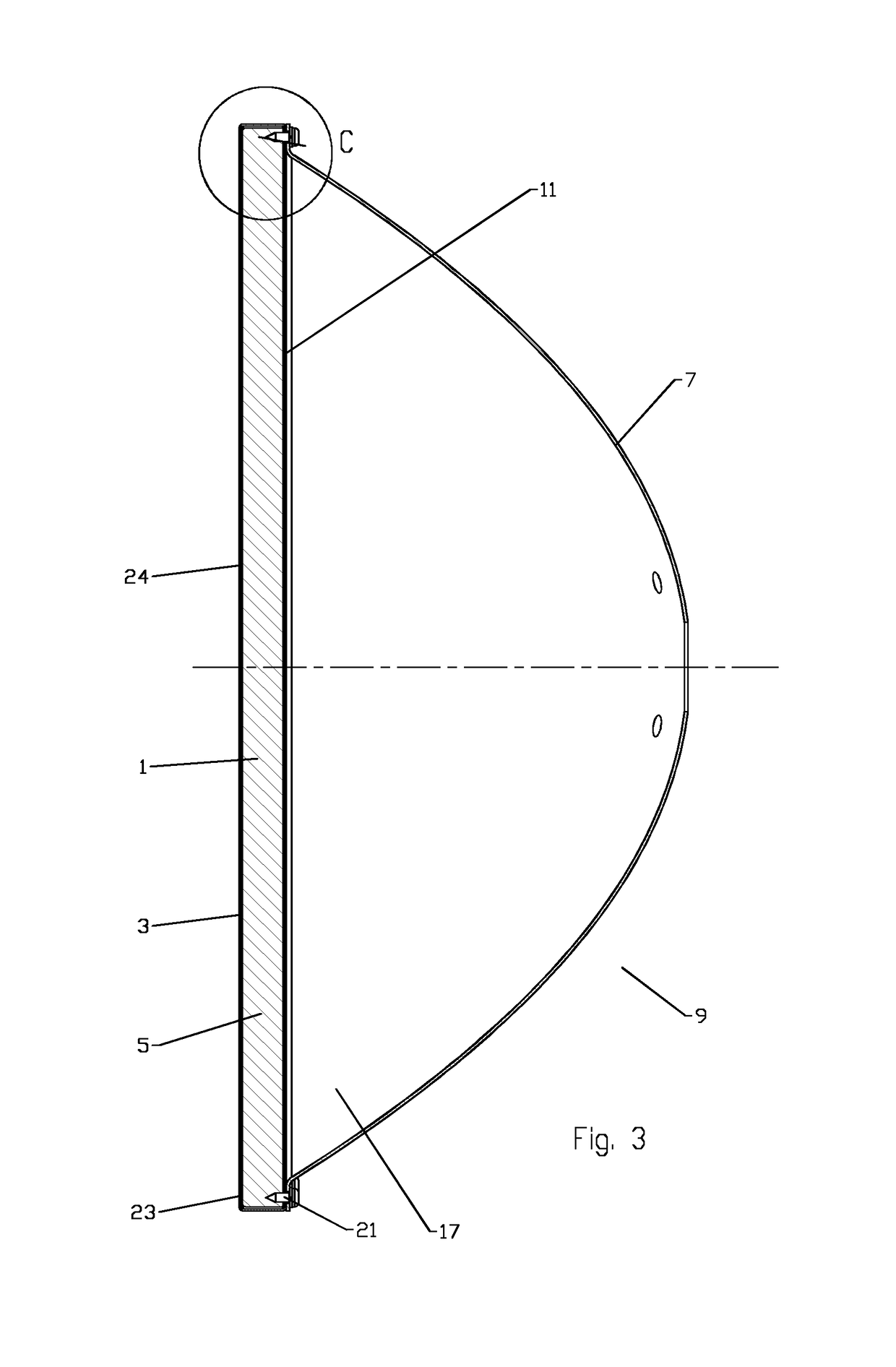Broad band radome for microwave antenna
a microwave reflector and broad band radome technology, applied in the direction of antennas, radiating element housings, other domestic articles, etc., can solve the problems of composite materials being significantly stronger and/or more expensive to manufacture than required, and incurring significant repair/replacement costs
- Summary
- Abstract
- Description
- Claims
- Application Information
AI Technical Summary
Benefits of technology
Problems solved by technology
Method used
Image
Examples
Embodiment Construction
[0041]The inventors have recognized that a composite of a moisture resistant isotropic film outer layer and a structural layer of low density foamed polymer material can result in a radome with adequate strength which is essentially RF transparent, enabling a single radome to be utilized with a broad range of microwave frequency bands.
[0042]As shown for example in FIGS. 1-4, a radome 1 has an isotropic outer layer 3 coupled to a structural layer 5 of foam material that is retained on a reflector dish 7, a seating surface 8 of the radome 1 mating with a retaining flange at the distal end of the reflector dish 7, enclosing an open end of the reflector antenna 9. An isotropic material as applied herein is one in which the material has a substantially homogeneous distribution. That is, the material is not a woven or fiber infused material, but a substantially uniformly distributed homogeneous material, such as a polymer film, coating or the like. The outer layer 3 may be, for example, a...
PUM
| Property | Measurement | Unit |
|---|---|---|
| thickness | aaaaa | aaaaa |
| dielectric constant | aaaaa | aaaaa |
| thickness | aaaaa | aaaaa |
Abstract
Description
Claims
Application Information
 Login to View More
Login to View More - R&D
- Intellectual Property
- Life Sciences
- Materials
- Tech Scout
- Unparalleled Data Quality
- Higher Quality Content
- 60% Fewer Hallucinations
Browse by: Latest US Patents, China's latest patents, Technical Efficacy Thesaurus, Application Domain, Technology Topic, Popular Technical Reports.
© 2025 PatSnap. All rights reserved.Legal|Privacy policy|Modern Slavery Act Transparency Statement|Sitemap|About US| Contact US: help@patsnap.com



